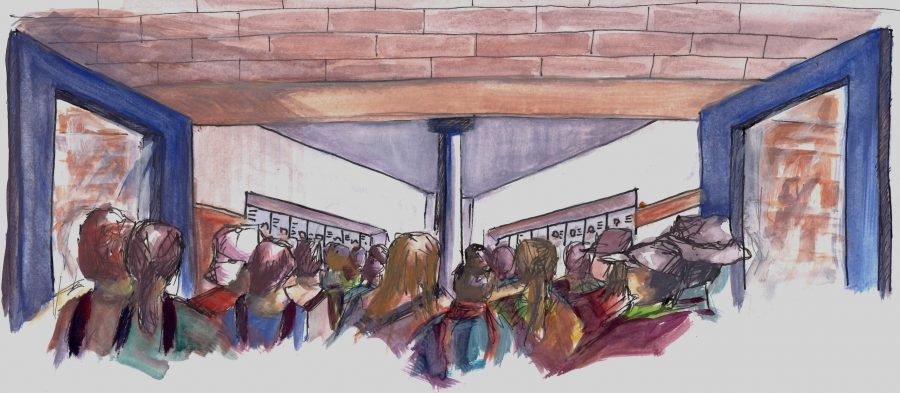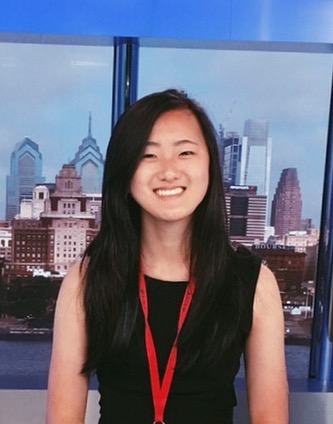Overpopulation hampers student and teacher life
December 3, 2016
Due to this year’s influx of freshmen, Dougherty Valley High School’s student population reached an all-time high with 3,007 students, causing concerns over the quality of student and teachers’ experiences on campus.
Dougherty, which opened in 2007, was built for a maximum of 2,200 students. Since then, 12 portables and 12 classrooms were added, increasing Dougherty’s capacity to 2,920 students at 30 students per classroom.
A study by Davis Demographics and Planning, Inc. found that by 2021, the school will hold 3,761 students, which would require a fifth round of building expansions.
The district has no plans to build a new high school in the area, so local elementary schools and middle schools in San Ramon will continue to feed into Dougherty, further increasing the population.
According to students, the population increase has been largely due to families moving into the area in search of high-quality education.
In a poll conducted by the Wildcat Tribune with a sample size of 157 students, 99 percent of students who have relocated in the last five years stated their parents moved here for the good schools.
However, the size of Dougherty’s student body has led to concerns among students over the quality of their education, emotional and physical well-being and school experiences.
Students who took the survey affirmed that the increased population has had negative effects. Crowding and difficulty getting to class during passing periods, as well as traffic in the morning and after school, are the most common problems cited.
“What I’ve seen this year because of the increase in students is that since the hallways and walkways weren’t made for this many students, it’s very tight and crowded and some students start to rush because they only have five minutes,” Campus Supervisor Ray Montalvo said. “I’m always worried about students getting trampled over or something bad like that.”
“We would like to see more carpooling because what I see is one child, one car. Also not enough kids walk to school. I understand that some kids can’t walk because they live a distance away but there are so many that could be walking.”
The poll also indicated that many students have difficulty finding places to sit during lunch. This school year, a rule prohibiting eating in hallways during lunch was implemented due to concerns regarding the school’s liability and student safety issues, such as tripping over people in crowded buildings and difficulty moving around and evacuating in case of emergencies.
“[The increased population] is annoying, especially since Dougherty is a closed campus. [There’s] no place to sit, and no place to eat,” junior Evan Cho said.
One of the biggest issues relates to students’ education.
Junior Danya Gao said, “Many people are unable to obtain schedule changes because of lack of space. In addition, some people who signed up for certain classes did not receive those classes.”
Several students also stated that because there were no more spots available in the Introduction to Business class, they were unable to participate in the DECA business and entrepreneurship club this year, since a requirement to be a member is completion of the course.
Dougherty’s increased student population has led to increasing class sizes, another issue noted by students, teachers and administration. In 2007, Dougherty started with six English teachers and each classroom averaged around 25 students per class. Dougherty currently has 18 teachers with 30 students per classroom on average. While the number of teachers has risen along with the rising number of students, the increase has not been proportional since the student to teacher ratio has increased.
Average class sizes will range from 30 students per class and 36 students per class for AP classes due to the higher student enrollment in AP classes. Because of these large class sizes, students have found difficulty participating in class and spending individual time with teachers to ask about concepts they want more help with.
Teachers are affected, as well.
“I don’t think that teachers are dramatically changing their lessons, but I think they’re becoming far more cautious about what they’re choosing to assign, how long it’s going to take them to grade things, what types of assessments they’re going to be giving,” history teacher Adam Bellows said. “Because the more students and the more the class gets bigger, you have to factor in, ‘OK, if I have now 40 students in every class, do I want to assign an essay?’”
Teachers know free response questions show more in-depth understanding of a curriculum, and that multiple choice tests do not exactly represent an accurate understanding. But because of the time required to grade more accurate assessments of students’ grasp of the material, such as essays, teachers have to adjust.
“The increasing class size is just squeezing the teachers with an increased workload, which frustrates them since it means less attention is available for students in large classes. Once a class [has more than 30 students], it is difficult to manage it and hard to meet the interests of the students,” Bellows said.
Math teacher Robert Gendron said, “The benefit of lower class sizes is that kids get more individual attention. It’s always better for everyone involved, it’s less grading for me and it means I can spend more time giving kids valuable feedback and answer their questions in class or their work on their tests. If I grade more quickly, I can give that feedback sooner.
“Any time my class sizes are large I always have more work. There’s just really no way around it. I can just have multiple choice questions where I don’t have any grading and I wouldn’t have any work, but that’s just not the best way to assess people all the time,” he said.
Although the district has no plans to build another school, the administration and Site Council have several plans to combat the population issue.
The school plans to utilize funds more effectively and distribute the funding for classes based on student interest. For example, Dougherty may have to cancel some classes based on lack of student enrollment.
Additionally, this summer the school plans to add five portables. Several years later, it potentially would add six more, for a total of 11 new portables.
The school district provides finite funding to “keep the school up and running,” with obligations such as lights, staff members, athletics, and fine arts, according to Principal Dave Kravitz. It gives Dougherty enough money to run the school for a six-period school day. For Dougherty to continue to offer A Period and maintain a seven-period day, the school taps the Education Fund, formerly called Academic Boosters, which are additional donations obtained from students’ parents, not from the district.
To continue to take advantage of Ed Fund donations, the administration and Site Council are working toward trying to make Dougherty have seven-period school days along with an A period for a total of eight periods per day. To do so, the school would need to promote more Ed Fund donations.
“Our superintendent put the idea out there to all the principals in the school district if they’re interested in exploring the option of flexible scheduling,” Kravitz said. “We will talk to more students and parents about it in our roster organization to bring up the idea. It’s an option that can be implemented in several schools in the district based on it being implemented in other school districts.
“From what I understand, we’re currently gauging interest from both staff and students and families. My understanding is that in some of these districts where these took place, 40 percent choose the early [start], 40 percent choose the normal start and 20 percent choose the late start. There’s a lot of obstacles to overcome but they’ve been overcome in areas like in Southern California.”



